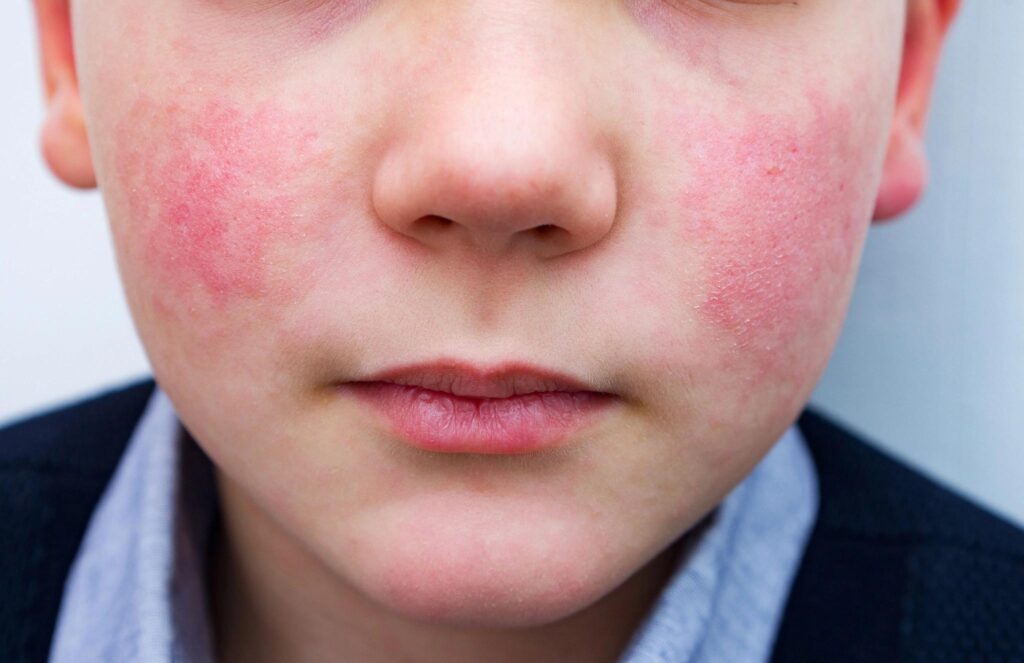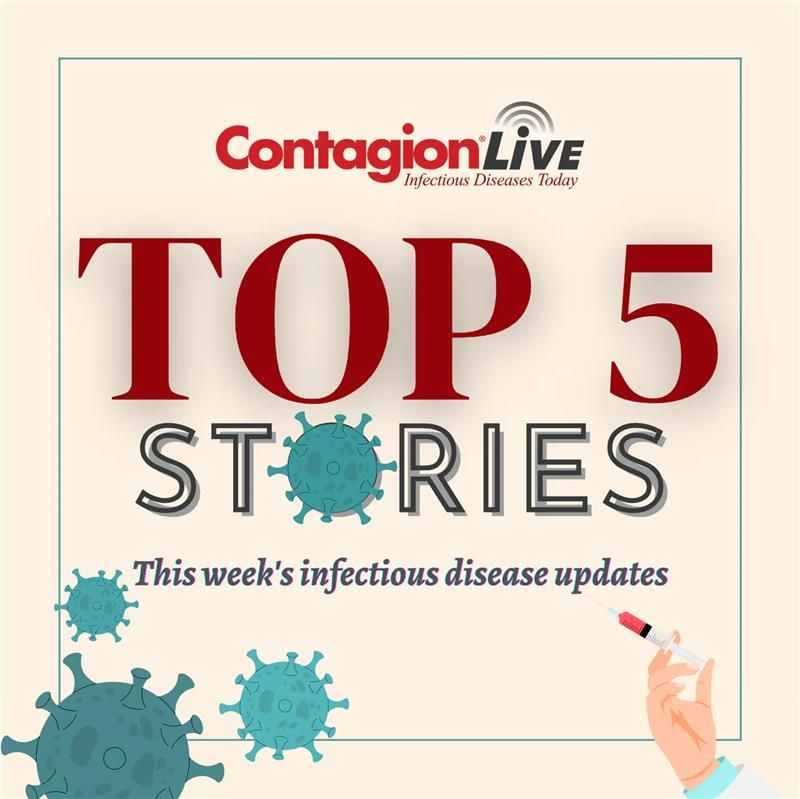Parvovirus B19 “slapped cheek” rash in children
Image credits: CDC

The CDC’s Health Alert issued on August 15, 2024, highlights an increase in human parvovirus B19 activity in the United States. This virus, typically a seasonal respiratory pathogen, has shown an unusual rise in cases, following similar trends observed earlier in 2024 across 14 European countries.1
CDC reports indicate a notable surge in cases, with rising test positivity rates and increased antibody prevalence in clinical specimens and plasma samples. Specifically, the proportion of individuals with IgM antibodies, which indicate recent infection, increased from less than 3% in 2022–2024 to 10% by June 2024. Among children aged 5–9 years, infection rates surged from 15% to 40% in the same period. Additionally, among plasma donors, the prevalence of parvovirus B19 DNA increased from 1.5% in December 2023 to 19.9% in June 2024. There have also been anecdotal reports of severe outcomes, such as fetal anemia and increased aplastic anemia in individuals with sickle cell disease.2
Key Takeaways
- The CDC has reported a sharp increase in human parvovirus B19 cases across the US, mirroring trends seen earlier in Europe in 2024.
- Parvovirus B19 is highly contagious and can cause severe complications in vulnerable populations, including pregnant women and individuals with weakened immune systems.
- Healthcare providers and the public are urged to be vigilant, with the CDC emphasizing the importance of awareness, testing, and prevention to manage the potential public health threat.
While the FDA recommends testing plasma-derived products for parvovirus B19, whole blood is not routinely screened in the US. Healthcare providers are advised to maintain heightened suspicion of parvovirus B19 in individuals presenting with symptoms, particularly those at high risk. Preventive measures should be implemented, and counseling provided to at-risk groups. Providers should follow established guidelines for testing and managing parvovirus B19 cases. Health departments are urged to inform healthcare providers about the increase in parvovirus B19 activity and promote respiratory illness prevention strategies. They should also communicate with daycare and school providers about parvovirus B19 risks and return-to-school guidelines.2
For the public, it is important to be aware of parvovirus B19 symptoms and seek medical care if pregnant, immunocompromised, or have a chronic hemolytic disorder with signs of the virus. Good respiratory hygiene should be practiced, with additional precautions considered for those at higher risk of severe outcomes. Individuals with parvovirus B19 are no longer contagious once the characteristic rash appears.2
What is Parvovirus B19?
It is a virus that typically causes mild illness, especially in healthy individuals. It is known for causing a distinctive “slapped cheek” rash in children, also called Fifth Disease or Erythema Infectiosum. Other common symptoms include flu-like symptoms and joint pain, particularly in adults.3
The international spread suggests a potential shift in the virus’s transmission or behavior. This is particularly significant as parvovirus B19 can cause various illnesses, including erythema infectiosum (fifth disease) in children, and more severe complications in adults, particularly pregnant women and individuals with weakened immune systems.1
While the infection is usually not serious, it can cause complications in people with certain blood disorders, weakened immune systems, or during pregnancy, where it may lead to anemia or increase the risk of miscarriage. Most people recover without needing special treatment, though supportive care may be necessary for those with complications.3
This alert is important because there is no routine surveillance for parvovirus B19 in the US, the true extent of the outbreak may be underreported. By targeting clinical laboratory professionals, the CDC is urging increased vigilance, testing, and reporting to manage this potential public health threat effectively. This advisory underscores the need for awareness and preparedness to mitigate the virus’s impact.1
References
-
08/15/2024: Lab Advisory: CDC Issues Alert for Increase in Human Parvovirus B19 Activity in the United States. CDC. August 15, 2024. Accessed August 22, 2024. https://www.cdc.gov/locs/2024/08-15-2024-Lab-Advisory_CDC_Issues_Alert_Increase_Human_Parvovirus_B19_Activity_United_States.html
-
Increase in Human Parvovirus B19 Activity in the United States. CDC. August 21, 2024. Accessed August 22, 2024. https://emergency.cdc.gov/han/2024/han00514.asp
-
About Parvovirus B19. CDC. August 13, 2024. Accessed August 22, 2024. https://www.cdc.gov/parvovirus-b19/about/index.html








